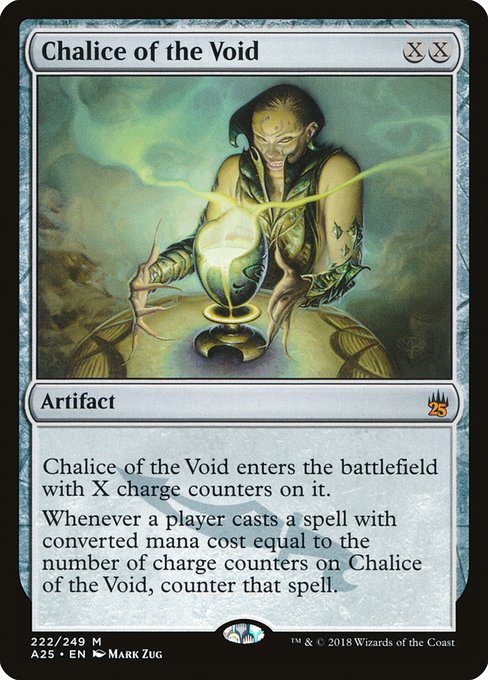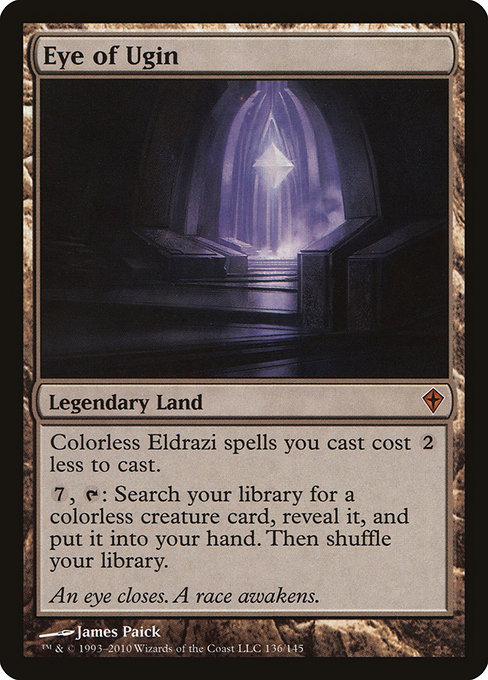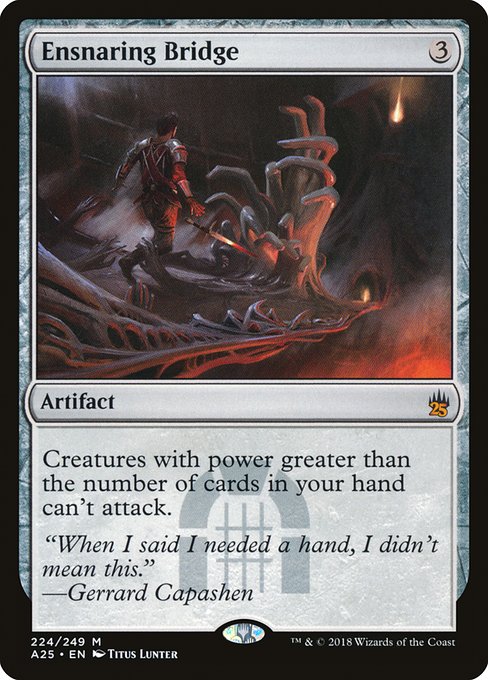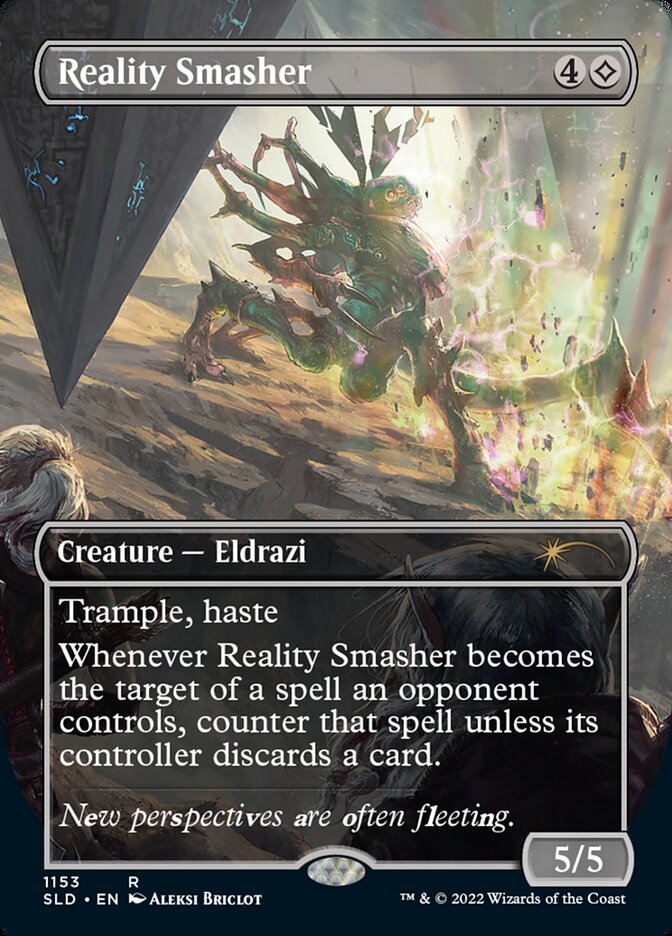Are you a Quiet Speculation member?
If not, now is a perfect time to join up! Our powerful tools, breaking-news analysis, and exclusive Discord channel will make sure you stay up to date and ahead of the curve.
I've played Modern since 2011 and I've never seen the community, metagame or market as volatile as I see them today. The Twin ban alone promised to be a tumultuous event. Add the Eldrazi takeover and we're in a real mess.
Prices have soared to unmatched heights on timeless staples and breakout hits, both because a deck has performed spectacularly and because a card has done nothing whatsoever. Bannings are discussed in every article (sorry---mine included). Eldrazi has claimed a 40%+ share on MTGO in the past week and a 20%+ share in paper. None of this looks to slow down until at least the March Grand Prix weekend and, if anything, it will probably get worse.
It's going to be a long three weeks.
Since last Monday, I didn't read, write, or hear about a Modern article that didn't discuss Modern's present upheavals in some form or another. Some readers are tired of this nonstop panic and hype (not to mention, Eldrazi), which can all feel more frantic than CNN's daily coverage of the American presidential race's primary season.
Personally, I think it's necessary. To talk about any other aspect of Modern would be disingenuous, ignorant or misleading. These forces are going to define Modern for years to come, and it's critical we try and negotiate them in the present.
That said, with widespread financial and format instability, it's difficult to isolate any lasting takeaways for readers to act on. Painter's Servant sold out in roughly 12 hours before even appearing in a real Modern tournament. Many players wanted Eldrazi Temple banned before Pro Tour Oath even finished. This constant turmoil makes it challenging to advise Modern investors on anything permanent.
Instead of identifying new speculation targets today (Valentine's Day present to my beloved readers: Magus of the Tabernacle), I want to focus on the broader themes which can help anchor you in the Eldrazi and Modern storm. Specifically, how you can avoid losing a lot of money on the Eldrazi hype train.
It's easy to get caught up in the Modern frenzy and throw dollars around in a TCGPlayer cart here and an eBay auction there. This article will help you be smarter with your money to minimize losses if Wizards plans a grisly end to the Eldrazi invaders in April.
Sell Out Ahead of Bans
Whether or not you think Eldrazi are going to get banned in April, you will probably want to sell the priciest staples now to avoid a potential share-collapse following a banning. For a moment, separate yourself from the hyperbole and mania surrounding this issue---this is purely a financial risk analysis that finds many Eldrazi staples too risky in the short term, and not valuable enough in the long run, to retain.
Metagame Regulation to Prevent a Ban
Some contest it's premature to act on banning chances or even talk about them. In my role of metagame analyst, I partially agree.
Despite Eldrazi's roaring success in week one (40%+ on MTGO!), there are powerful metagame forces which can battle the colorless scourge. This includes decks like Merfolk, Abzan Liege, Abzan Company, and U/W Control. It also includes sideboard and maindeck bullets such as Spreading Seas, Ghostly Prison, Aerie Worshippers and more.
We're already seeing some of this regulation at play in events, where Eldrazi players are losing to opponents better prepared to grapple with the monsters. Pro Tour breakout decks can catch fields unaware, and adaptation is possible against even powerful new strategies. These are all encouraging signs suggesting the possibility of Modern's rebalancing, and the related possibility of Eldrazi dodging a ban.
Going deeper into banning context and financial risk analysis, however, I'm much more worried. All of us want to believe in the possibility for metagame change to avoid a ban. Unfortunately, the stakes are too high and the chance is too low to bank on it.
To break this down, we'll consider both cards that could be banned themselves, and cards that will suffer if another staple gets banned.
Calculating Financial Risks for Ban Targets
For the most part, this section is going to focus on Eye of Ugin, which has the highest ratio of cost to bannability. You could easily apply the same logic to Eldrazi Temple or even Simian Spirit Guide and Chalice of the Void if you prefer, but we'll stick with Eye for now.
In all these cases, we have cards with high present valuations that stand to lose a lot from an April ban. This means we need to assess what factors will need to emerge for a ban to transpire. If those factors are found to be likely, we will also conclude these cards should be sold off at their highest pre-ban price to maximize profit and minimize losses. If those factors are found to be unlikely, we will not necessarily need to sell.
At first glance, many start and stop their ban analysis at metagame prevalence. They see Eldrazi's obscene 40% MTGO share and commanding 20% paper prevalence and ask how likely these are to drop.
Of course, the answer is "relatively likely." Because of the metagame forces I discussed earlier, there is almost no chance these decks stay at this level. No deck in Modern's history sustained a 25%+ share for more than a month, and Eldrazi is unlikely to be the exception to that, especially with so many early-identified weaknesses. Based on this, many conclude that the chance of a share-drop is high which, in turn, means the chance of a ban is low.
Sadly for those who want to keep Eldrazi stock, this calculation is deeply flawed. It misses two other critical variables which also need to be true for Eldrazi cards to hold value and/or avoid a ban.
The first factor is metagame warpage. Even if Eldrazi's share declines, this needs to not come at the expense of too many players playing too many anti-Eldrazi cards and decks. We are reminded of the Skullclamp ban back in old Standard, when Wizards explained the importance of metagames not just consisting of decks doing one thing and other decks trying to beat them:
Every competitive deck either had four in the main deck, had four in the sideboard, or was built to try and defend against it. And there were a lot more successful decks in the first two categories than in the third. Such representation is completely unhealthy for the format.
This adds a complicated dimension to Modern's metagame diversity. Many players have pointed to cards like Worship, Ensnaring Bridge, Ghostly Prison, Painter's Servant, and many more as examples of Modern's adaptability to decks like Eldrazi.
If those cards are too narrow, however, and Modern devolves into an Eldrazi vs. Anti-Eldrazi format, then Eldrazi's share alone won't matter. The overall format climate will still be unhealthy (particularly if Eldrazi remain successful). For Eldrazi to avoid a ban, the share must go down and the metagame can't warp too heavily in the process.
Now let's add a third factor to the mix: player satisfaction. It's not enough for Eldrazi to both occupy healthy metagame shares and not to bend other Modern decks too heavily while doing so. Players also need to be happy with the Eldrazi situation, not complaining too much, and attending tournaments.
If any of this doesn't happen, bans are immediately in the mix. We saw this at play in the Stoneforge Mystic and Jace, the Mind Sculptor bannings in early 2011. There, Wizards discussed the importance of keeping players happy:
The ultimate goal is player enjoyment, and if most people were enjoying themselves, we weren't going to take any rash actions based solely on the math of deck lists.
But then the formal complaints began pouring in, followed by a drop in attendance---pronounced at Pro Tour Qualifiers, shocking at the recent New Phyrexia Game Day, more subtle but just as real at Friday Night Magic---that we can't ignore. If people don't want to play the game, we need to fix it.
Attendance matters, whether for players trying to enjoy the game, organizers trying to host events, or Wizards trying to manage and profit from the game. Given the overwhelming outcry against Eldrazi so far, and considering the possibility of this impacting Grand Prix attendance in early March, there's real cause for worry if you're betting on Eldrazi's long-term chances.
To some extent, many of the unhappy players don't have evidence to stand on---much of their discontent is unjustified. But if you combine the perfect storm of high metagame shares, a narrowed anti-Eldrazi field and that dissatisfaction, things look grim for our colorless overlords.
This puts Eldrazi owners in a much tougher position. For Eldrazi value to hold at present levels, you would need all three of these scenarios to work out in your favor. Any one of them could sink the Eldrazi ship and lead to an April banning, which of course would torpedo your Eye of Ugin value. Or your foil Eldrazi Temples.
As yet another consideration, we need to understand the risk of short-term overvaluation. Pro Tour Oath sent the Modern world into a tizzy over the Eldrazi surge, with many players moving towards the deck before understanding where it really settled in the metagame. As a rule, initial Modern hype almost always overvalues a staple relative to its eventual settling point. Even Modern regulars like Blood Moon eventually stabilize after spikes.
When you add this fourth factor into the mix, it becomes much harder to stick around the Eldrazi hype train, at least with your valuable staples. There are just too many elements working against the cards to safely stay on board. If you make a bad call, your hundreds of dollars in Eyes become pennies overnight.
That's simply too much to gamble against. Following these risks, I'm giving you a few pieces of advice for a few different cards.
- Eye of Ugin and Eldrazi Temple: Sell. These cards stand to lose a lot if banned and are at artificial highs today. If no ban comes down, you can buy them back immediately after the April announcement hits. If a ban does happen, you'll make the most by selling now and not after the cards crash.
- Chalice of the Void: Hold. Chalice has been safe in Modern for years and many Eldrazi decks don't even use it. Price memory is likely to keep Chalice high for a while, especially if Eldrazi remains in some post-banning form in the Tier 2 range.
Calculating Financial Risks for Ban Collateral Damage
I don't envision Wizards banning more than one card if an update comes down the April pipeline. If so, Eldrazi would still keep Eye or Temple and would still be viable in some form. Tier 2 Eldrazi could certainly be a thing!
Temple might even pair with Isle of Vesuva as a slower Eye replacement (minus the inevitability and explosiveness). Eye, of course, would maintain the deck's burst-speed. All of this would ensure most Eldrazi cards remain playable.
Most of the cards in this category aren't particularly valuable to begin with, although they have all gained value since Pro Tour Oath. This gives you two options in negotiating your Eldrazi stock in advance of April.
If you purchased a few Eldrazi to play them, or have a meager stock of 8-12 copies (or something similar), you might as well keep your cards. By the time you handle shipping costs and all the resources going into a sale, you won't be up much money. Even if you made $2.00 per card, that's only $20 or so in profit, which doesn't account for the drop-off between the buylist and retail prices. Moreover, all these cards will probably remain viable after a possible ban, so you aren't taking on a lot of risk in keeping them for the future.
On the other hand, if you hoarded Eldrazi en masse after the Pro Tour, this is a good time to unload. We're in a major Eldrazi bubble kept afloat by hype more than anything else.
These are all high print-run rares from recent sets, many of which are likely to drop naturally even if Eldrazi does dodge a ban. If they don't, the price crashes even further. Either way, if you're one of those canny investors who snagged 100 copies of Endless One at quarters per piece, this is the safest time to cash out.
Remember the Risks!
One of the hardest things to do as a Magic speculator is knowing when to get out. Everyone wants to wait one more day to squeeze out a few extra bucks. This isn't always a bad strategy (Modern price memory is so real that you don't stand to lose a lot), but it becomes much more pressing in moments like this.
For Eldrazi to survive in April, and for Eldrazi cards to keep value past that announcement date, we'll need four factors to align. Although this could certainly happen, it's at least as likely as it not happening, and the cost to you of a failed metagame adjustment is too high. This cost should move us to sell before we hold.
I'll keep checking in on metagame forces as we work to combat and understand the interloping Eldrazi. Until next week, head down to the comments if you have any questions about the deck, the overall Modern context, specific Eldrazi cards, or any and all things Modern!






















